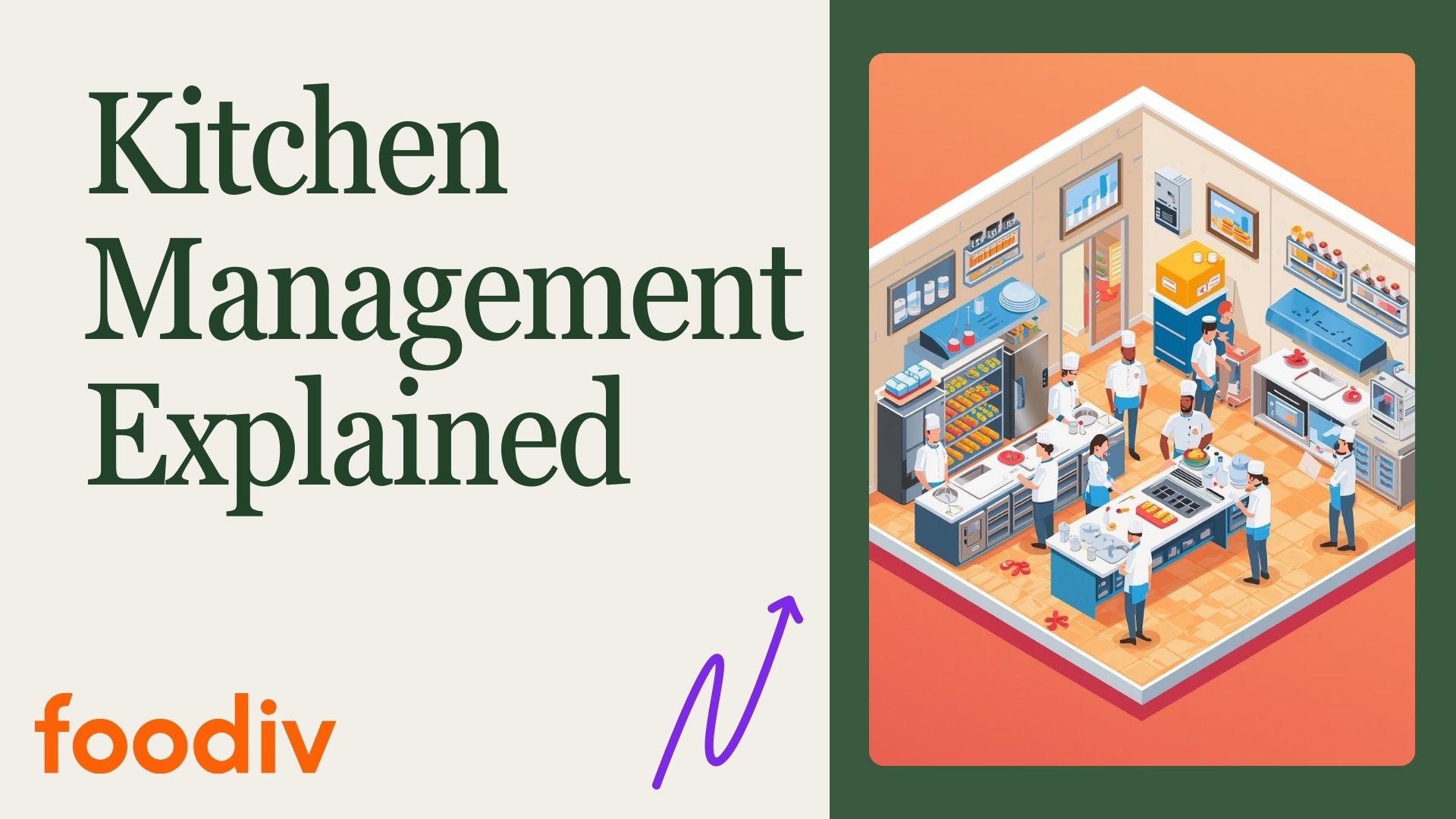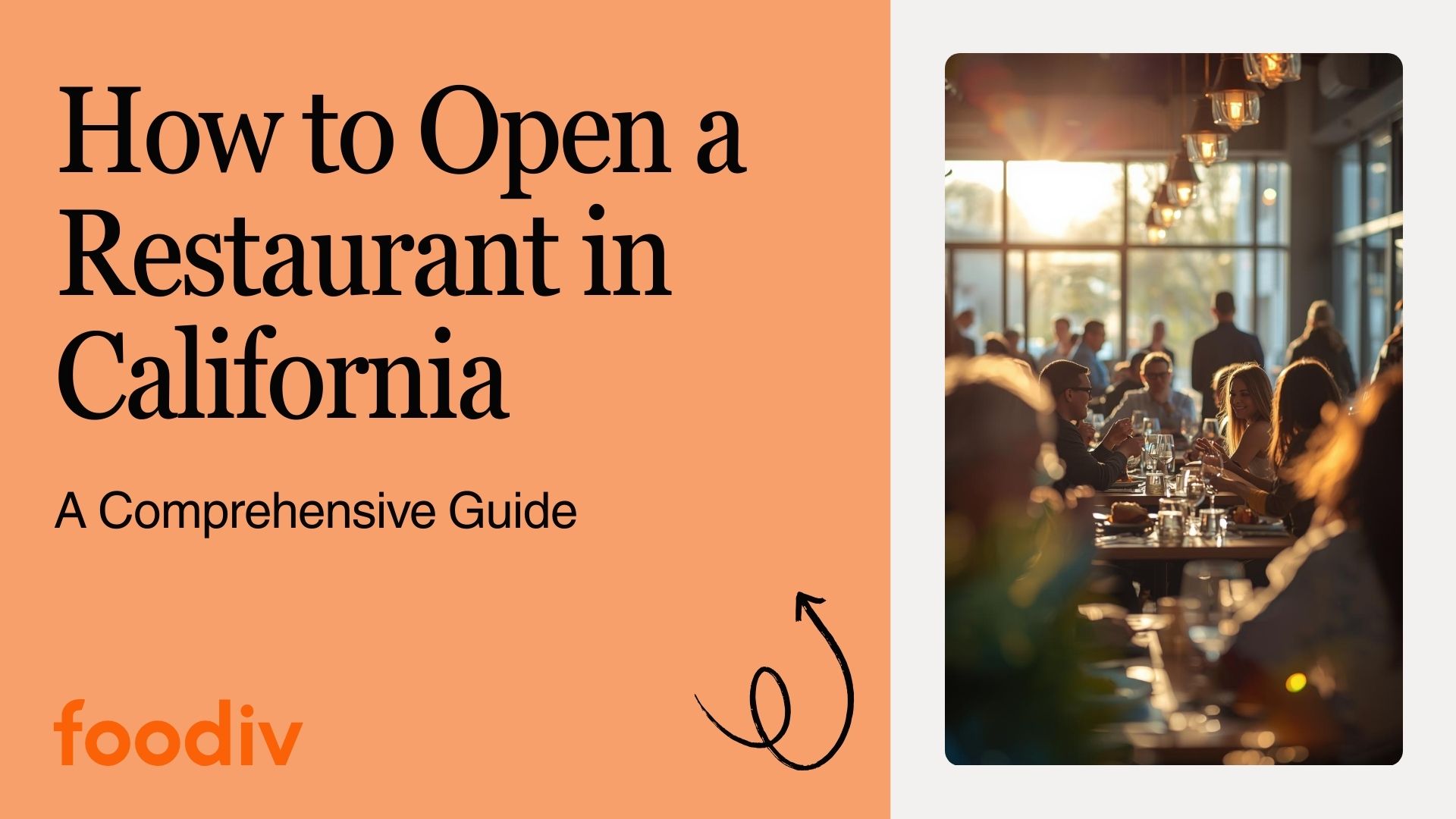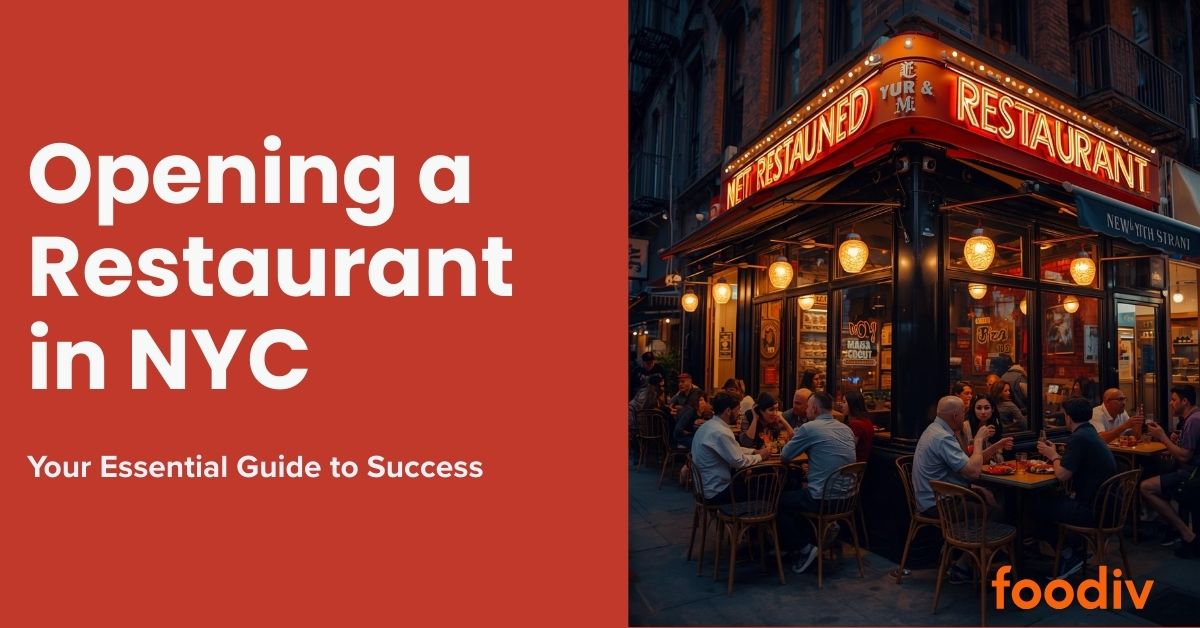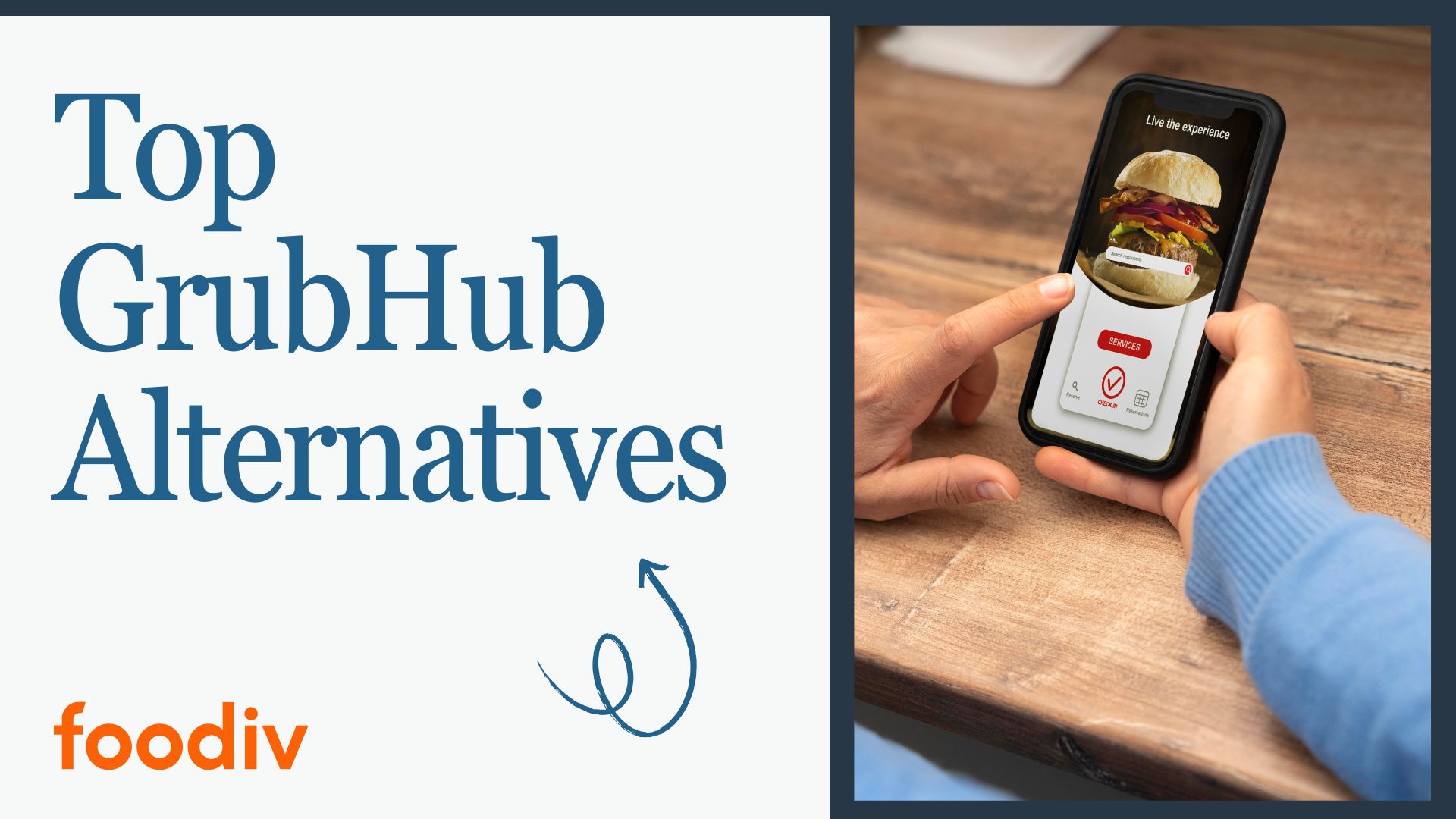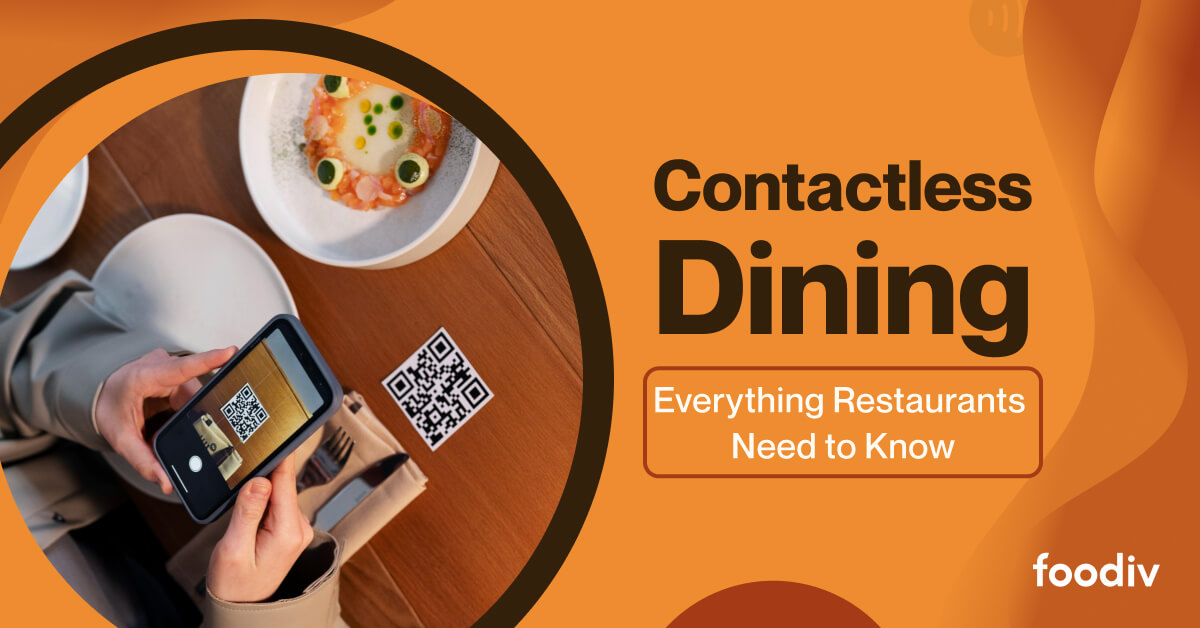
Contactless dining is a modern dine‑in experience where diners can view the menu, place their order, and complete payment without touching shared surfaces or exchanging items with staff. Guests simply scan a QR code or use their phone to access the full menu, select items, and make payment. This process gives diners more control over their experience.
This method gained popularity during the COVID‑19 pandemic when restaurants turned to touch‑free services to protect public health. According to a Datassential study, 82 percent of customers say that contactless payments make them feel safe dining in.
Contactless dining combines safety, speed, convenience, and a touch of technology. It brings efficiency for staff while offering guests a seamless experience. From faster table turnover to fewer order errors, this method aligns with evolving customer expectations and operational needs.
This guide will explore what contactless dining means for restaurants and how it works in real settings. It will outline steps to set it up, highlight key advantages, and identify which types of establishments benefit the most.
What Is Contactless Dining?
Contactless dining refers to a system that allows guests to enjoy a full restaurant experience without the need to physically interact with menus, staff, or payment machines. This approach makes use of digital tools like QR codes, mobile devices, and cloud-based platforms. The goal is to reduce touchpoints while improving the speed and flow of service.
This method replaces traditional printed menus with digital ones accessed through QR codes placed on tables or counters. Customers scan the code with their phone and browse the menu on their screen. From there, they can place orders and pay directly without waiting for a server. The entire process happens digitally, reducing delays and unnecessary contact.
Contactless dining does not mean eliminating human interaction entirely. Staff still play an important role in food preparation, delivery, and customer support. However, repetitive or avoidable contact points are removed. This includes tasks like handing out menus, taking verbal orders, or bringing a card machine to the table.
Restaurants of different sizes have begun using contactless dining as part of their daily service. It suits casual cafes, fast service outlets, full-service restaurants, and even outdoor food stalls. The flexibility of the system makes it adaptable to many formats.
By using digital tools in a simple and accessible way, contactless dining changes how restaurants serve guests while protecting hygiene and improving efficiency.
How Does Contactless Dining Work for Restaurants?
Contactless dining in restaurant settings works through a simple flow. It uses digital tools to guide guests from the moment they arrive to the time they complete their payment. This process limits physical contact and improves how orders are managed. It is now a common feature in modern restaurants that value safety, speed, and convenience.
Step 1: Guests Access a Digital Menu
At the start of the experience, guests are seated at a table where a QR code restaurant menu is displayed. The guest scans the code using a mobile phone camera. This action opens a digital menu for restaurants, often in a web browser, with no app required. The menu shows categories, photos, and prices.
Step 2: Guests Place Orders from Their Device
Using the digital interface, guests select their food and drinks. The system allows for customization, quantity updates, and special requests. This step forms the base of the contactless ordering system. Guests take their time to build their order and review the items before confirming.
Step 3: Order Reaches the Kitchen Immediately
Once the guest submits the order, it is sent directly to the kitchen system. Some restaurants use kitchen display screens while others rely on printed order tickets. This use of contactless restaurant technology speeds up the process and reduces the chance of human error.
Step 4: Staff Deliver the Food and Support the Guest
The kitchen prepares the meal, and staff bring it to the guest’s table. In restaurant contactless dining, staff still play a key role. They make sure food is delivered, tables are cleared, and guests receive help when needed. The main difference is that ordering and payment do not rely on face-to-face communication.
Step 5: Guests Make a Contactless Payment
When the guest is ready to pay, the system displays a secure checkout page. Guests complete payment using mobile wallets, cards, or other digital methods. No physical card machine is required. The transaction is fast and safe, and a receipt can be shown on the screen or sent by email.
Step 6: Pickup and Hybrid Use of Contactless Dining
Contactless dining also works for takeout. Guests order ahead using the same platform. When the order is ready, guests arrive, confirm the pickup, and leave without delay. This flow helps reduce lines and keep operations smooth.
Step 7: Mobile Ordering and POS Integration
Modern mobile ordering for restaurants includes full system integration. Orders connect with the point-of-sale system, kitchen display, and payment gateway. These tools help track order status, reduce delays, and manage sales reporting. The full system supports both front-of-house and back-of-house tasks.
Contactless dining brings together digital menus, quick payments, and improved order handling. It gives guests control of their experience while helping restaurants focus on accuracy, safety, and service flow.
How to Set Up a Contactless Dining Experience in Your Restaurant?
Setting up contactless dining in restaurant operations is a simple process when approached step by step. With the right tools and a clear plan, any restaurant can create a smooth and modern contactless experience. This method improves guest convenience, reduces physical contact, and helps streamline daily operations.
Step One: Select a Digital Menu Platform
The first step in setting up restaurant contactless dining is choosing a platform that allows for easy menu creation. A digital menu for restaurants should be clear, customizable, and mobile-friendly. It must support food images, item descriptions, and live updates. Many platforms also include search functions and multi-language support to improve the guest experience.
Step Two: Generate a QR Code Restaurant Menu
Once the menu is ready, the system will generate a QR code linked to it. This QR code restaurant menu is placed on tables, counters, or takeaway stations. Make sure each QR code is easy to scan and clearly visible. Clean and water-resistant placement helps maintain usability over time.
Step Three: Activate Contactless Payments
A complete contactless ordering solution must include secure digital payment options. Set up payment methods that work with cards, wallets, and local payment gateways. The system should process transactions quickly and issue digital receipts. This part of the process allows guests to complete their visit without needing to handle a payment device.
Step Four: Connect Orders to the Kitchen
Contactless restaurant technology connects guest orders directly to kitchen tools. This can include kitchen display screens or printers for order tickets. Orders are sent in real time as soon as they are placed. This process reduces the chance of errors and speeds up kitchen operations.
Step Five: Train Staff on the New System
Restaurant staff must understand how the contactless system works. Even though guests manage their own ordering, staff are responsible for food delivery, customer support, and service quality. Provide basic training on the system so team members can assist guests and solve small technical issues when needed.
Step Six: Guide Guests Through the Process
Use signs and table displays to explain how contactless dining works. Provide simple step-by-step instructions for scanning the QR code, placing an order, and making payment. This guidance ensures that even guests who are new to the system can use it with ease.
Test the System Internally
Before making the system public, run a full test with your team. Staff can play the role of guests and go through each step of the experience. This internal test helps find small issues and makes sure the system is ready for everyday use.
Setting up contactless dining creates a smoother workflow for the restaurant and a more comfortable experience for the guest. With mobile ordering for restaurants, QR codes, and clear digital tools, the dining process becomes faster, safer, and more efficient.
Benefits of Contactless Dining in Restaurants
Understanding the benefits of contactless dining in restaurant operations helps highlight why this approach is becoming a standard across the industry. Contactless dining is more than a safety feature. It improves how guests order, how staff work, and how restaurants operate overall. From faster service to better data, the system creates value for both sides of the dining experience.
Improved Safety and Hygiene
Contactless dining reduces the number of shared items in the restaurant. Guests do not need to handle printed menus or payment machines. This limits the spread of germs and builds trust with diners who prefer a clean and controlled environment. Clean, touch-free systems make guests feel safer during their visit.
Faster Table Turnover and Shorter Wait Times
With a QR code restaurant menu, guests can begin browsing and ordering as soon as they are seated. This removes delays caused by waiting for a server. It also allows the kitchen to receive orders earlier, which speeds up food preparation. Faster table turnover creates more availability during busy hours.
Higher Order Accuracy
In traditional settings, spoken orders can lead to mistakes. A contactless ordering system lets the guest select each item directly. Special requests or changes are entered without confusion. The kitchen receives clear instructions, which helps reduce wrong orders and food waste.
Increased Revenue through Digital Upselling
Many digital menu for restaurants include features that suggest add-ons, sides, or upgraded items during the order process. This helps guide guests toward higher-value choices. Because the process is self-paced, guests often spend more time reviewing the full menu, which leads to larger orders.
Reduced Labor Costs
Restaurant contactless dining supports a leaner team without lowering service quality. Fewer front-of-house staff are needed for order taking. This lets the team focus on food delivery, table service, and customer care. The system takes care of the repetitive tasks while staff handle the more personal parts of service.
Real-Time Data and Insights
Contactless restaurant technology collects useful data during each shift. This includes best-selling items, average ticket size, and order frequency. The system also shows peak times and customer behavior patterns. Managers can use this information to plan menus, adjust staffing, and run offers with better timing.
Sustainability and Paper Reduction
A digital menu removes the need for printed menus. Payments happen through mobile ordering for restaurants, so paper bills are also avoided. The entire flow supports a more sustainable restaurant model. It helps lower waste and shows guests a commitment to responsible practices.
Contactless dining makes restaurants more efficient, responsive, and guest-friendly. The system supports every part of the operation, from first contact to final payment, while improving safety and service quality.
Whom Does Restaurant Contactless Dining Suits Better?
Contactless dining is flexible and works across a wide range of food businesses. It fits both small and large operations and supports various service styles. Whether a business runs from a single location or manages a chain, contactless systems help improve speed, reduce manual tasks, and meet guest expectations.
Independent Restaurants and Cafés
Independent restaurants and small cafés benefit from the simple setup of contactless dining in restaurant settings. A digital menu and contactless payment system lower the need for physical menus or billing machines. This creates a smoother workflow and allows guests to place their orders without delay. These businesses often operate with limited staff, so a contactless ordering system helps save time while improving order accuracy.
Cloud Kitchens and Ghost Kitchens
Cloud kitchens work entirely through online orders and delivery. Restaurant contactless dining suits this model because there is no need for front-of-house service. A mobile-friendly digital menu for restaurants supports easy updates and lets guests place orders directly from their phones. This model matches well with contactless restaurant technology and helps reduce operational costs.
Food Trucks and Mobile Vendors
For mobile vendors, physical space is limited. Contactless dining solves this by using QR code menus and mobile ordering for restaurants. Customers scan the code and place their orders without waiting in line. Payments are completed on the customer’s device, which makes the process faster and more efficient for both parties.
Fast Food Chains and QSRs
Quick service restaurants handle a high volume of orders in short time frames. Contactless systems reduce delays and help guests place their orders faster. Menu suggestions and combo options built into the platform encourage higher spending. Staff can focus on food preparation while the system manages ordering and payments.
Multi-Location Restaurants
Restaurants with several locations benefit from a shared contactless system. Managers can update menus, monitor orders, and review reports from a central dashboard. This makes it easier to maintain quality and consistency across all branches. A digital menu for restaurants also allows for easy changes to pricing or item availability.
Home-Based Food Entrepreneurs
Contactless dining also works for home-based chefs and small food businesses. A digital menu and online payment option allow them to take orders without phone calls or printed forms. This setup offers more control and reduces time spent on manual coordination. It helps small operations manage more orders without needing a physical location.
Food and Beverage Franchise Operators
Franchise owners often seek tools that maintain brand standards and reduce operational issues. Restaurant contactless dining provides a unified process for ordering, payments, and reporting. This helps ensure each outlet follows the same flow, improving consistency and reducing service errors.
Investors and Food Tech Professionals
Those investing in food businesses look for models that scale easily and reduce fixed costs. Contactless restaurant technology lowers the need for front-end infrastructure. It also provides real-time sales data, which supports better decision-making. This makes contactless dining a strong choice for long-term growth.
Restaurant contactless dining works well across different business types. Whether the goal is faster service, easier management, or lower cost, this system offers practical tools for modern dining operations.
Takeaways for Different Business Models
Contactless dining is flexible and adaptable. Different food businesses can use this system in a way that fits their service model and operational needs. Each format has its own goals, and contactless solutions can be matched to support them effectively. The following takeaways help identify how to apply contactless dining based on the type of business.
Small Restaurants and Cafés
For smaller locations with limited staff, a QR code menu for restaurants combined with contactless payments offers a simple and effective setup. A basic digital menu for restaurants allows guests to order on their own. These systems are often low-cost and easy to manage, making them ideal for independent operations.
Fast Food Chains and Quick Service Restaurants
Quick service models benefit from full contactless ordering systems that support high traffic and quick turnover. Mobile ordering for restaurants in this category can include upsell features and combo suggestions that increase order value. Staff can focus on food preparation while the system handles menu browsing and payments.
Cloud Kitchens and Ghost Kitchens
These delivery-only business models are well-suited for contactless dining in restaurant operations. Since there is no physical service space, the business can use a mobile-friendly platform to receive orders and process payments. The contactless ordering software supports automated flow from the guest to the kitchen without front-end staff.
Food Trucks and Mobile Vendors
Mobile vendors need fast and flexible tools. A contactless restaurant technology setup using a QR code and a digital payment gateway allows customers to order quickly without physical menus or cash handling. This makes the service faster and more convenient in outdoor or on-the-go settings.
Home-Based Food Entrepreneurs
For home kitchens and part-time food sellers, restaurant contactless dining provides a way to organize orders and payments without calls or manual tracking. A digital menu link can be shared through messages or social media. Customers place orders in advance, and payments are collected securely.
Multi-Location Chains or Franchise Models
Businesses with multiple branches benefit from using a shared system. A digital menu can be updated across all locations from a single dashboard. This approach keeps menus consistent, tracks performance by outlet, and allows franchise operators to monitor overall operations through connected contactless restaurant technology.
Event Catering or Pop-Up Setups
Temporary service setups can also use contactless dining. QR codes printed on table signs or banners give guests access to the menu from their phones. This removes the need for printed menus and manual order taking, keeping service flow organized even in high-traffic or short-term events.
Contactless dining offers a wide range of options for food businesses. By choosing the right tools and approach for each business model, restaurants can improve how they serve guests and manage daily operations.
The Future of Dining: Contactless Dining
Contactless dining is a smart long-term move for any restaurant. It improves safety, reduces physical touchpoints, and speeds up service while meeting the expectations of modern guests. By using digital menus, mobile ordering, and secure payment options, restaurants can create a smoother and more reliable dining experience.
Starting simple and adapting gradually makes the transition easier. A basic setup with a QR code restaurant menu and contactless payments can be expanded over time with integrated kitchen displays and advanced features. Combining the efficiency of technology with attentive service ensures that guests still enjoy a warm and personal dining atmosphere.
Foodiv, an all-in-one food ordering system, help restaurants adopt contactless dining without complexity. Foodiv supports digital menus, mobile ordering, and contactless payments, making it easier for both small and large restaurants to improve operations. With the right tools, restaurants can stay agile, efficient, and ready for the future of dining.


